Here you will find information on how to locate the books on the shelves of our various libraries. You can also read about the classification systems we use: the Dewey Decimal Classification system (DDC) and the Classification system for Swedish libraries (SAB).
The easiest way to find a book in the library is to first look it up using the library search tool. Once you have found a book in the search tool, you will receive information about its location in the library. This includes details about its placement on the shelf and a map to help you find your way to the correct spot in the library. The example below illustrates what this looks like:
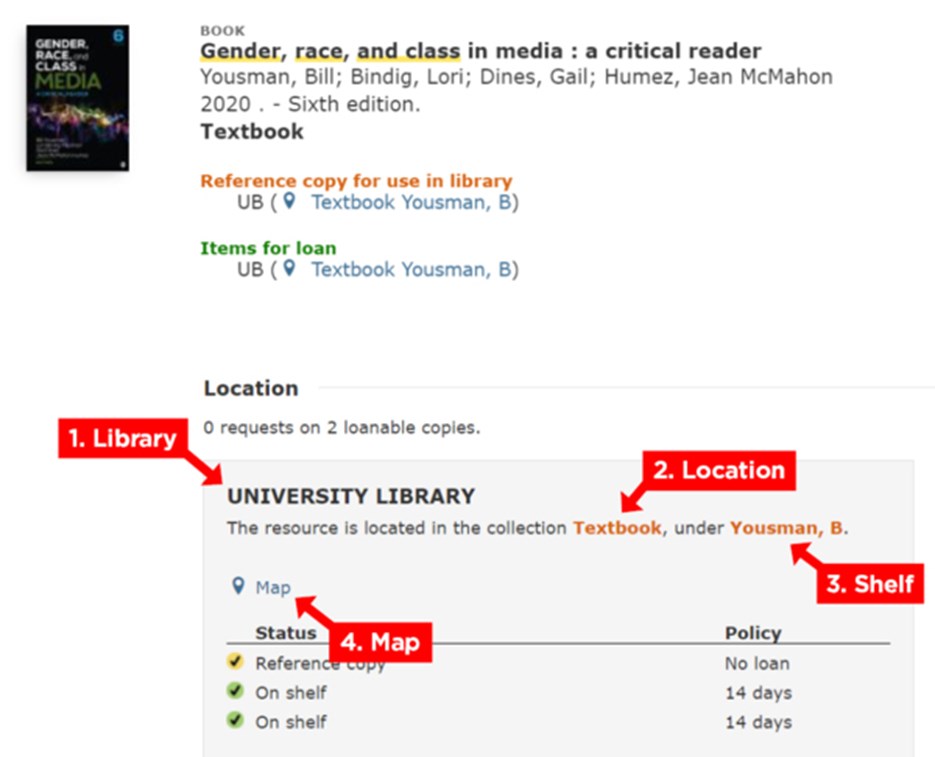
1. The book is available at this library.
2. The book is located in this part of the library.
3. The book has this placement on the shelf.
4. Map showing the location of the shelf in the library.
Image Linus Talltjärn
The University Library houses a wide range of literature, from scholarly books and textbooks to fiction and children's literature.
Our textbook collection is located in the part of the library called Learning Space. The textbooks are arranged alphabetically, either by book title or by author. The easiest way to find a book's location on the shelf is to search for the title in the library search tool.
You can read more about our textbooks here:
The scholarly books in the Study Hall are arranged according to two different systems: the Dewey Decimal Classification (DDC) and the Classification system for Swedish libraries (SAB).
In the DDC collection, you will find more recent literature
In the DDC system books are arranged by subject using different numerical codes.
For example, a book with the code 704. 039 457 deals with the subject of Sami arts and crafts. The first three digits (704) indicate that the book is about arts and crafts, and the numbers after the decimal point indicate that it focuses on Sami arts and crafts.
An advantage of the DDC system is that it allows detailed sorting of books according to their content. This means that books on the same subject are placed next to each other on the shelves.
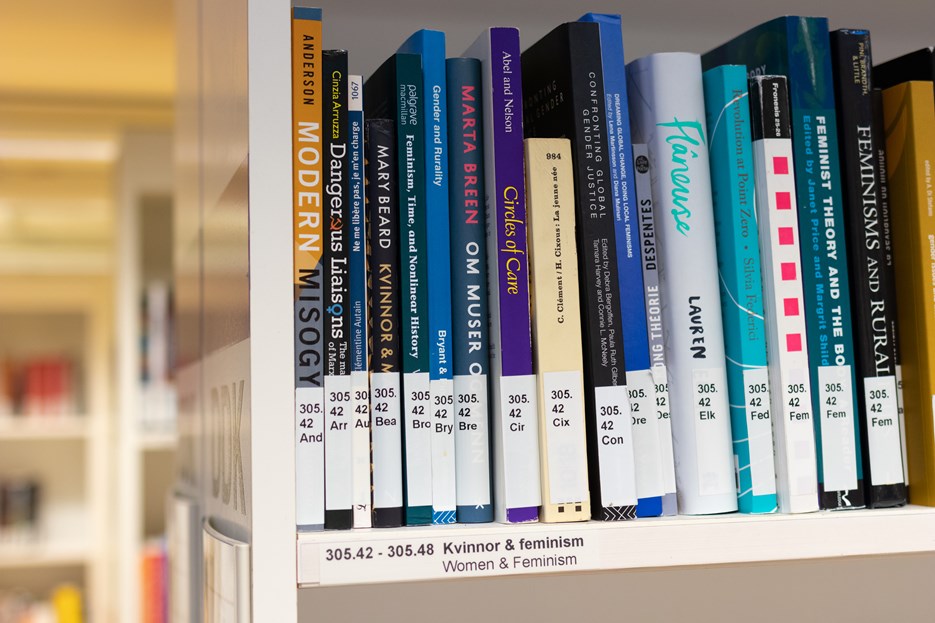
Books arranged by DDC code in the Study hall.
Image Linus TalltjärnThe signage on the shelves provide more information about the placement of the books.
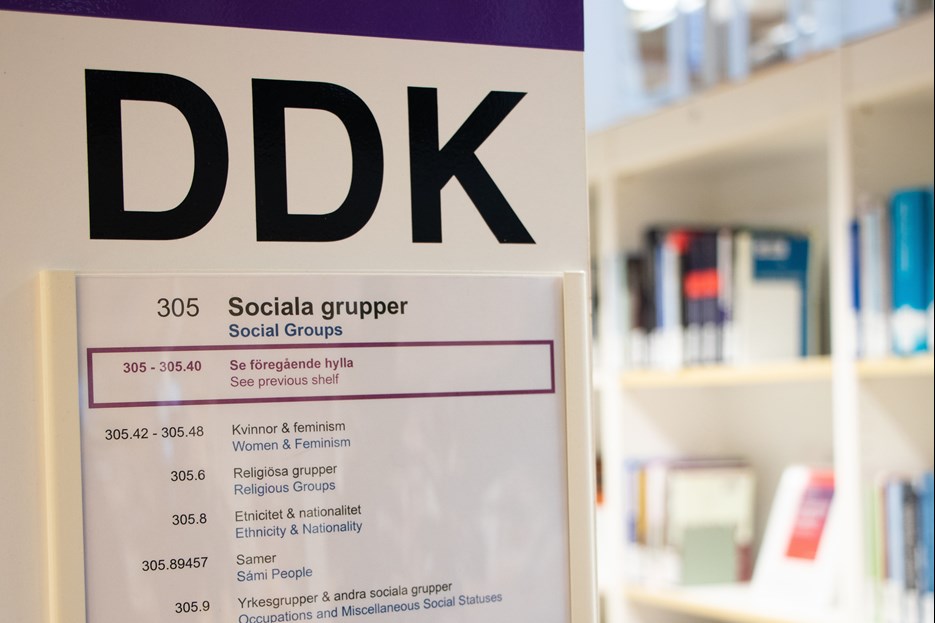
Signage on the shelves of the DDC collection in the Study hall.
Image Linus TalltjärnIn the DDC collection (the shelves are marked with the Swedish abbreviation DDK), we place the most recently published scientific books. You can read more about the DDC system further down this page.
The SAB collection contains older scientific literature
In the SAB collection, you will find scholarly books that the library acquired before 2011.
You can read more about the SAB system further down this page.
Our stacks contain a wide range of books, from non-fiction for children and adults to fiction in English and other languages.
In this extensive collection, books are placed according to a consecutive number sequence based on the year the library acquired them.
Swedish fiction and children's literature are arranged according to consecutive numbers, which might look like this: Skön 99405 or Barn 123717.
Fiction in languages other than Swedish is listed by the DDC code and author. For example: Skön 894. 574 5 Ves.
At the Medical Library, you will find scholarly books and textbooks on medicine, dentistry, and pharmacy. We also have special collections of biographies (pathographies) and fiction focusing on medicine. The books are arranged according to two different systems: the Dewey Decimal Classification (DDC) and the Classification system for Swedish libraries (SAB).
All new material, including our textbooks, is arranged according to the Dewey Decimal Classification (DDC).
In the DDC collections, you will find more recent literature
For example, a book with the code 618. 928 9 is about child psychiatry. The digits before the decimal point (618) indicate the subject is child health (paediatrics), and the digits after the decimal point specify a focus on psychiatry.
An advantage of the DDC system is that it allows for detailed sorting of books according to their content. This means that books on the same subject are placed next to each other on the shelves. You can read more about the DDC system further down this page.
The SAB collection contains older literature
In the SAB collection, you will find literature that the library acquired before 2011.
For example, a book on child psychiatry is located under Vle (Child and adolescent psychiatry). You can read more about the SAB system further down this page.
In the Arts Campus Library, you will find scholarly literature and textbooks focusing on art, architecture, and design. We also have small collections of biographies, comics, and children's books.
Our textbooks are arranged alphabetically, either by the title of the book or by the author.
The scholarly books in the library are organised by subject, using the Dewey Decimal Classification (DDC) system (the shelves are marked with the Swedish abbreviation DDK).
In our DDC collection, a numerical code indicates what the book is about
For example, a book with the code 724. 6 deals with architecture between 1900-1999. The numbers before the decimal point (724) indicate that the book is about architecture, and the number after the decimal point specifies the focus on the years 1900-1999.
An advantage of the DDC system is that it allows for detailed sorting of books according to their content. This means that books on the same subject are placed next to each other on the shelves. You can read more about the DDC system further down the page.
In several places in our libraries, we arrange books based on the Dewey Decimal Classification (DDC) system, which is the most widely used classification system in the world. It has been translated into over 30 languages and is used in many countries.
DDC uses detailed numerical codes to classify different subjects:
The ten main classes of DDC
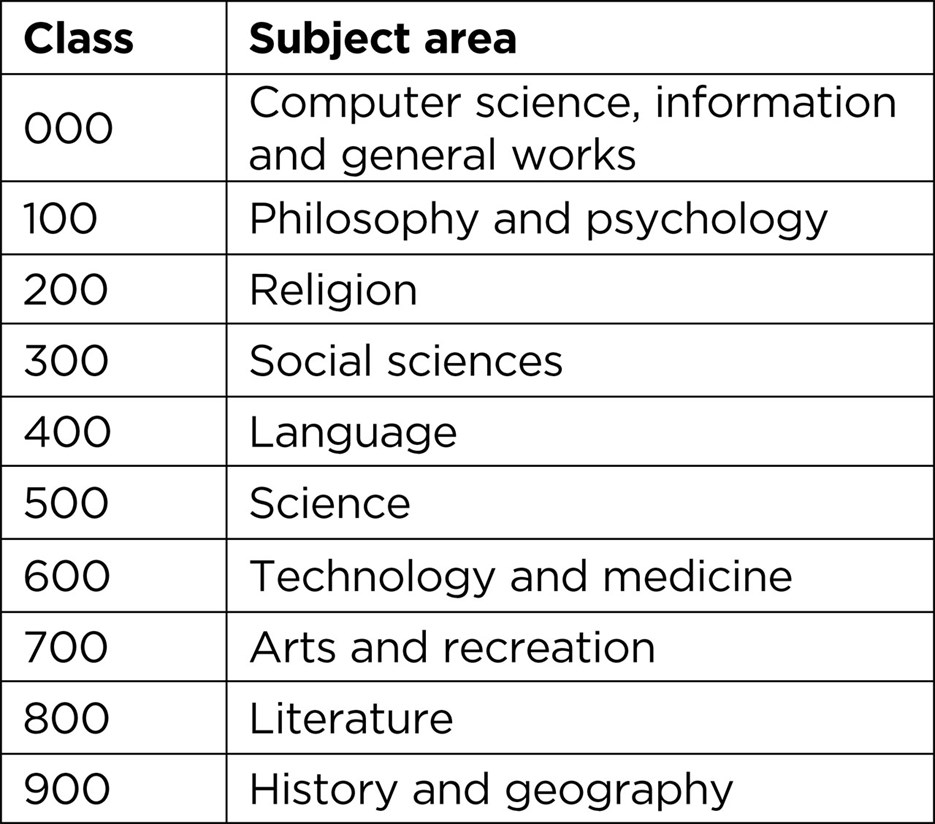
The ten main classes of DDC
Image Linus TalltjärnExamples of call numbers based on DDC
Here you will find examples of how the DDC numerical code can be structured according to different subject areas.
Example from the University Library
Nergård. J-I. (2022). The Sámi narrative tradition : cosmopolitans on the Arctic tundra. Routledge.
This book is located in the collection Study Hall DDK, under 948. 004 945 7 Ner.
948 = History and geography: Scandinavia
004 = Ethnic and national groups
9457 = Sami
Ner = first three letters of the author's surname
Example from the Medical Library
The resource is located in the collection on the entrance floor, under 618. 928 9 Rut.
618.92 = Paediatrics
618.928 = Paediatric neurology
618.9289 = Child psychiatry
Rut = first three letters of the book’s title
Example from the Arts Campus Library
The resource is located in the collection DDK, under 724. 6 Fem.
724. 6 = Architecture from 1900-1999
Fem = first three letters of the book's title
In this feature, you can read more about the Dewey Decimal Classification:

Can library search tools affect how we view research?
Much of the older scientific books at the University Library and the Medical Library are classified according to the SAB system
The SAB system was developed by the Swedish Public Library Association and was previously very common in Swedish libraries. The last edition was published in 2006. Since then, many libraries have switched to using the international DDC system.
Main classes of the SAB system
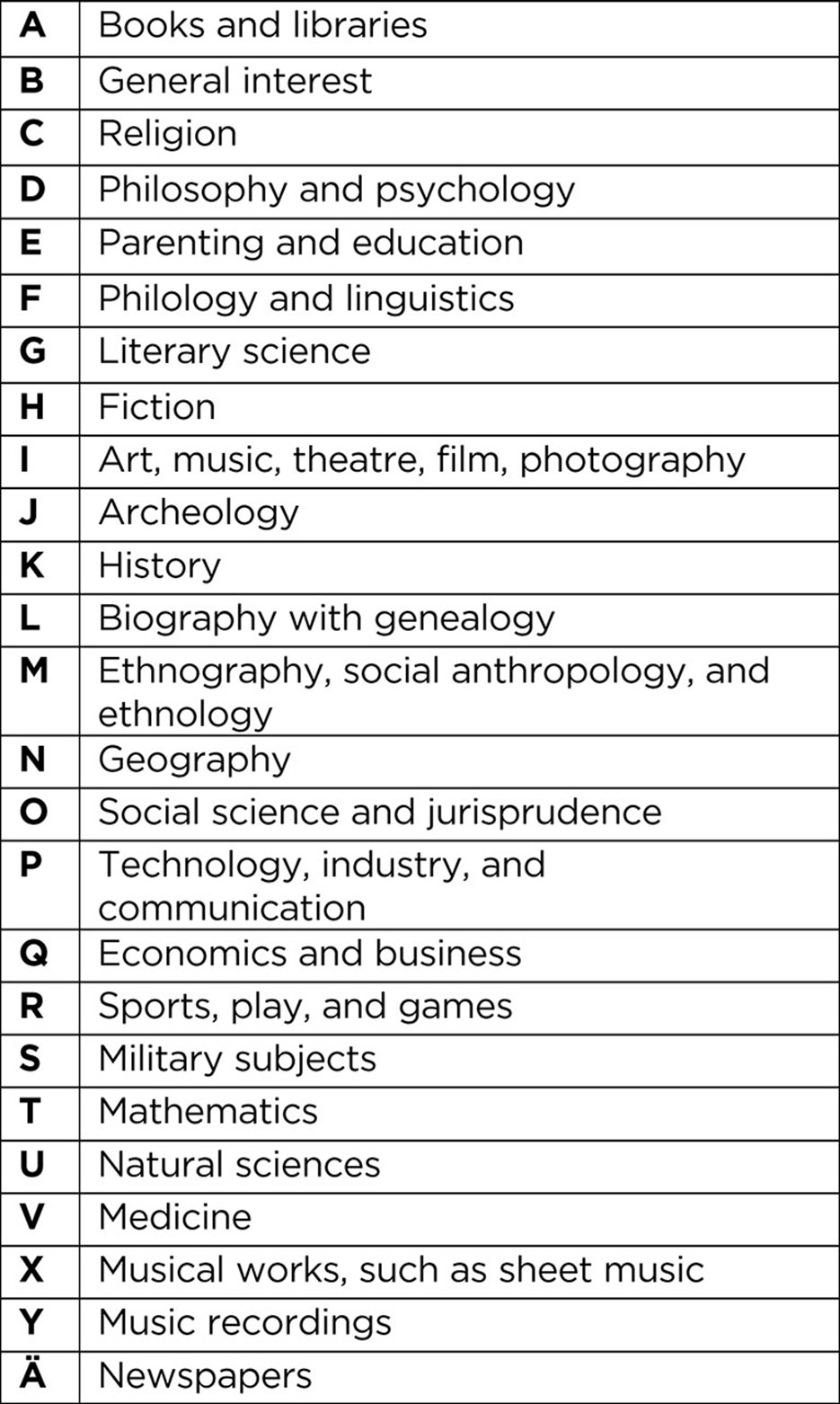
Main classes of the SAB system
Image Linus Talltjärn